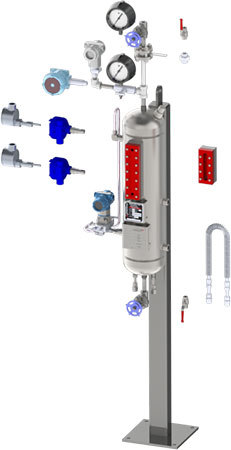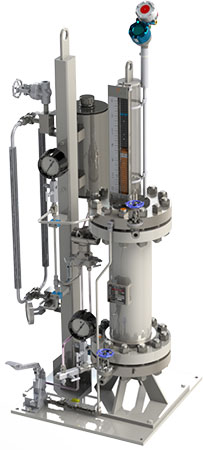An Overview of Seal Support Systems
Seal support systems are integral to the optimal functioning of mechanical seals in all industries. They provide a controlled environment that extends the life of mechanical seals by managing the seal’s exposure to different operational parameters. These systems regulate the temperature, pressure, and contamination levels around the mechanical seal, ensuring its longevity and reliability.
Understanding the American Petroleum Institute (API) Standards
The American Petroleum Institute (API) sets the standard for oil, gas, and petrochemical equipment, including mechanical seals and their support systems. API’s standards serve as a benchmark for quality and safety in the industry, guiding the selection and implementation of seal support systems. These standards ensure compatibility and performance across a wide range of industrial applications.
API Plan 52 and Plan 53: In-Depth Analysis
API Plan 52
API Plan 52 is designed for applications requiring dual unpressurized mechanical seals. It involves an external reservoir containing a buffer fluid that circulates between the seal faces.
Key Features:
- Buffer Fluid Circulation: The reservoir circulates a buffer fluid between the seals, which is typically at a lower pressure than the process fluid.
- Temperature Control: The buffer fluid absorbs heat generated by seal friction, preventing overheating and potential damage.
- Contamination Prevention: Plan 52 helps keep contaminants away from the seal faces, which is crucial in maintaining seal integrity.
Ideal for:
- Non-Hazardous Environments: Best used where leakage or exposure to the process fluid does not pose a significant risk.
- Stable Operating Conditions: Effective in settings with consistent pressure and temperature, where seal stress is manageable.

API Plan 53
API Plan 53 is suitable for more demanding conditions, using a barrier fluid at a higher pressure than the process fluid. It comes in three subtypes: 53A, 53B, and 53C, each with a distinct mechanism for maintaining barrier fluid pressure.
API Plan 53A:
- External Pressure Maintenance: Utilizes an external source like a pump or gas bottle to maintain the pressure of the barrier fluid.
- Versatility: Can adapt to varying operational conditions, making it suitable for a range of industrial applications.

API Plan 53B:
- Bladder Accumulator-Based Pressure Control: Employs a bladder accumulator to ensure a consistent barrier fluid pressure, essential for fluctuating process environments.
- Stable Performance: Ideal for applications where process conditions vary, but stable seal performance is critical.
API Plan 53C:
- Piston Accumulator for High-Pressure Management: Uses a piston accumulator, suitable for very high-pressure environments.
- Robust Design: Particularly effective in scenarios with extreme pressure demands, offering enhanced reliability.
Common Advantages:
- Environmental Safety: Prevents leakage of hazardous fluids, making it suitable for applications involving toxic, flammable, or corrosive fluids.
- High-Pressure Tolerance: Handles extreme pressures and temperatures, essential in heavy-duty industrial, oil & gas, and chemical/petrochemical settings.
Suited for:
- Critical and Hazardous Applications: Necessary in processes where leakage could have severe environmental and safety consequences.
- Harsh Industrial Conditions: Ideal for challenging conditions found in sectors like oil and gas, chemical processing, and power generation, where equipment is subjected to extreme stress.

Conclusion
Selecting the right seal support system, whether API Plan 52 or one of the subtypes of Plan 53, depends on the specific requirements of your application. Understanding these nuances ensures not only the longevity of your mechanical seals but also the safety and efficiency of your operations. At Flexaseal, we provide expert guidance and a wide array of solutions tailored to meet your industry’s unique needs. Contact us for more information and assistance in choosing the ideal seal support system for your application.
